Autumn is the perfect time to enjoy a variety of nutrient-packed fall superfoods that are at their peak of freshness. These seasonal foods are rich in fiber, vitamins and antioxidants that can strengthen your immune system, protect your heart, support brain health and help manage your blood sugar.
The Top Fall Superfoods You Should Be Eating
- Beets – High in nitrates that support heart health and may lower blood pressure.
- Pomegranates – Packed with polyphenols, antioxidants that promote heart health and protect against inflammation.
- Cabbage – A nutrient-dense vegetable that fights inflammation.
- Persimmons – Rich in vitamin A and lutein, which protect vision and support heart health.
- Ginger – Known for its anti-inflammatory properties and ability to support immunity and digestion.
- Pears – Fiber-rich fruit that aids digestion and may help regulate blood pressure.
- Walnuts – Loaded with omega-3 fatty acids that may boost brain function and support heart health.
- Turnips – Low-calorie root vegetable with glucosinolates that have cancer-fighting properties.
- Cranberries – High in antioxidants and known for promoting heart health.
- Cauliflower – A low-calorie vegetable with glucosinolates that may reduce the risk of cancer and diabetes.
This season is the best time to incorporate these nutrient-rich fall superfoods into your diet. In this guide, we’ll share delicious ways to enjoy these powerhouse foods and give your health a natural boost.
Beets: The Heart-Healthy Superfood You Can’t Ignore

Benefits of Eating Beets
The naturally sweet roots are rich in nitrates, which can help lower blood pressure, increase healthy blood flow, and improve your body’s ability to take in and use oxygen. These benefits help protect your cardiovascular health and can enhance your stamina, according to a report in the journal Nutrients.
Beets are high in vitamins A and C, and are a rich source of folate, the B-complex vitamin that’s essential for healthy cell growth and red blood cell formation, says the American Heart Association.
Delicious Ways to Enjoy Beets
- Roasting or grilling beets caramelizes their sugars, adding extra sweetness to their earthy taste.
- They’re delicious as a side dish or in Beet and Goat Cheese Appetizer.
- Pickled beets are a favorite for many families.
- Beets add sweetness and fiber to our chocolatey Red Velvet Brownies. No one will even know the veggies are in them.
- For more inspiring ideas, check out these easy beet recipes that can’t be beat!
Pomegranates: The Antioxidant Powerhouse for Your Heart and Brain

Pomegranate Health Benefits
Pomegranates are a fruit with thick skin and flesh that envelops dozens of seeds in juicy gel sacs. The fruit is typically eaten by cutting or breaking it open to take out the edible seeds, known as arils.
The juice contains ellagitannins, super-nutrients called polyphenols which have an anti-inflammatory effect your body. These polyphenols also have been found to help prevent artery walls from thickening and reduce the buildup of cholesterol and plaque, two common causes of heart attacks and strokes.
Pomegranate supplements reduced the incidence of inflammatory bowel disease in lab animals, according to a report from UCLA Health. The report highlights two other studies suggesting that consuming pomegranate can protect against skin cancer and may even help bolster aging brains. This fruit is also high in vitamin C and fiber.
Easy Ways to Enjoy Pomegranates
- For a quick tutorial on preparing your pomegranate, watch our short video on how to deseed one without making a mess.
- Sprinkle pomegranate seeds in plain Greek yogurt for flavor, color and a boost of nutrients.
- Add pomegranate seeds to smoothies or toss a handful into a mixed green salad.
- Turn plain club soda or seltzer into a colorful mocktail with a few pomegranate seeds or use the fruit’s juice to make Sparkling Pomegranate Holiday Punch.
- Combine the arils with goat cheese, sunflower seeds and lentils to make rich, flavorful Pomegranate Lentil Caviar, an elegant appetizer that’s healthy and affordable.
- Get even more ideas with our mouthwatering pomegranate seed recipes.
Cabbage: A Nutrient-Rich Veggie to Fight Inflammation

Why Cabbage Deserves a Spot in Your Diet
The humble cabbage is in fact one of the most nutrient-rich fall foods. A cup of chopped raw cabbage has only 22 calories and it fills you up with two grams of fiber. You also get half of your Recommended Daily Allowance (RDA) of vitamin C and more than 80 percent of the vitamin K you need.
It has 119 milligrams of potassium, which helps your body regulate its sodium levels and your blood pressure.
Cabbage contains a high concentration of anthocyanins, which are antioxidant nutrients that help control inflammation in your body, according to a report by the Cleveland Clinic. Chronic inflammation is associated with heart disease, cancer, rheumatoid arthritis and many other medical conditions.
The report also noted that glucosinolates, sulfur-containing chemicals abundant in cabbage, “break down during the digestive process into substances that may help fight cancer cells and clear them from your body.”
Creative Cabbage Dishes to Try
- Coleslaw is the first dish that comes to mind when many of us think of cabbage. Our Spicy Peanut Slaw recipe is a zesty variation that’s high in flavor and low in calories.
- Foods such as sauerkraut and kimchi combine the nutritional power of the vegetable with the gut-healthy probiotic bacteria that are produced during the fermentation process.
- Our Healthy Stuffed Cabbage recipe is a diet-friendly remake of a classic dish.
- You don’t have to wait until St. Patrick’s Day to whip up a batch of fun and flavorful Corned Beef and Cabbage Egg Rolls.
Persimmons: The Fall Fruit that Protects Your Vision and Heart
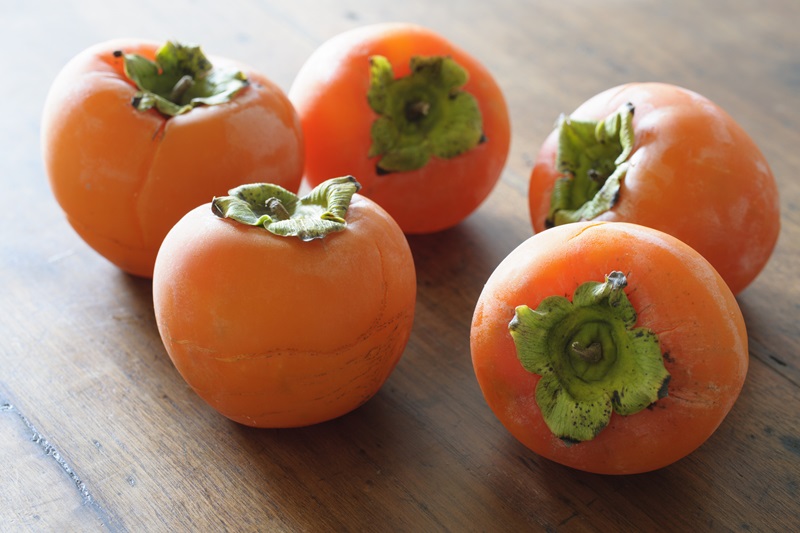
Why Persimmons Are a Fall Favorite
This fall superfood has orange skin, soft flesh and a mildly sweet flavor when fully ripe. Native persimmons grow uncultivated in many areas of the United States. The two varieties commonly found in stores in autumn, Fuyu and Hachiya, come from Asia.
An average size persimmon has about 120 calories, six grams of fiber and zero grams of fat, according to the United States Department of Agriculture (USDA). Persimmons are valuable source of vitamin A, which supports healthy vision. In fact, one serving has more than half of the recommended daily allowance of the vitamin.
The outer skin is rich in lutein, an amino acid that is known to protect against eye disease. The orange color indicates an abundance of beta-carotene, an antioxidant that has been linked to a reduced risk of heart disease, says a report from the American Heart Association.
The fruit’s peel also contains flavenoids, which have been shown to have “anti-diabetic and antioxidant properties.”
Tasty Ways to Enjoy Persimmons
Fuyu persimmons are squat, tomato-shaped fruits with flattened bottoms. They are ready to eat when they reach their full bright-orange color, even while they are still firm.
Hachiya persimmons are elongated with pointy bottoms and need to soften after turning orange, as their unripe, astringent taste makes them inedible. They should be eaten when the fruit is squishy soft.
Here are some ideas for enjoying both varieties:
- Many people put ripe Hachiya persimmons in the freezer for a few hours and eat them like instant sorbet.
- You can slice persimmons for salads, bake them into sweet crostini, or use them in traditional English-style winter puddings.
- This Beet and Persimmon Salad with Goat Cheese is a quick, colorful and powerfully nutritious way to enjoy two seasonal superfoods.
Ginger: The Spicy Root with Powerful Benefits
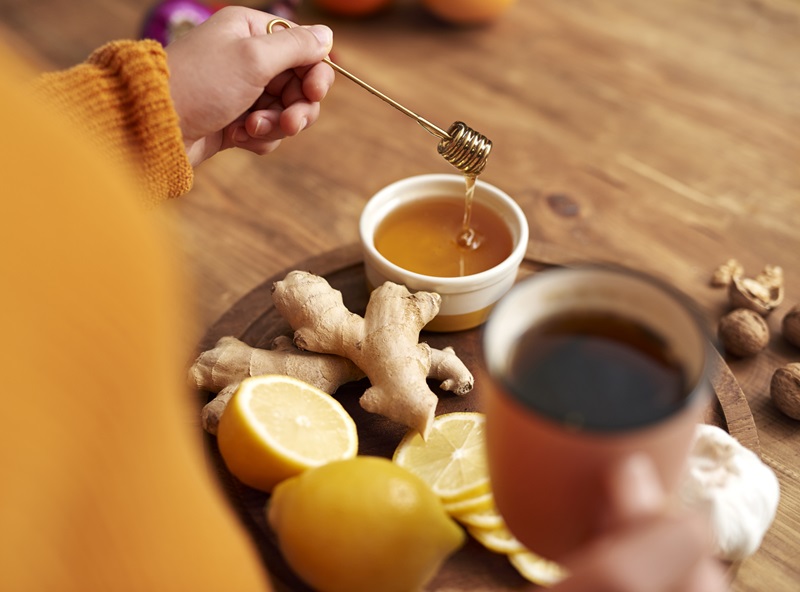
Why Ginger Is Good for You
The sweet and zesty spice has a long history of use in folk medicine as a treatment for indigestion. Recent studies have found that ginger soothes inflammation and can ease muscle pain after intense physical activity, says a report in the International Journal of Preventative Medicine. Its active ingredients also appear to boost your immunity and to suppress the growth of cancer cells, the article states.
People with Type 2 diabetes who consumed ginger daily for 10 weeks reduced their blood sugar, insulin and cholesterol levels, while those on a placebo did not, according to a study published in the International Journal of Endocrinology and Metabolism.
How to Add Ginger to Your Meals
- The fastest way to get the benefits of this fall superfood is to make a simple tea. Just put two tablespoons of peeled and thinly sliced ginger root and four cups of water in a medium-sized pot and boil for 10 minutes. Strain out the ginger pieces and sip straight or with a few squirts of lemon juice.
- This Orange Carrot Ginger Smoothie recipe is a bright way to start your day or power up your afternoon.
- Air Fryer Boneless Garlic Chicken Bites will have your whole family asking for more.
- When you need a quick pick-me-up, these 4-Ingredient Ginger Cacao Bites deliver chocolaty flavor and ginger’s health benefits.
Pears: The Fiber-Rich Fruit for Gut Health
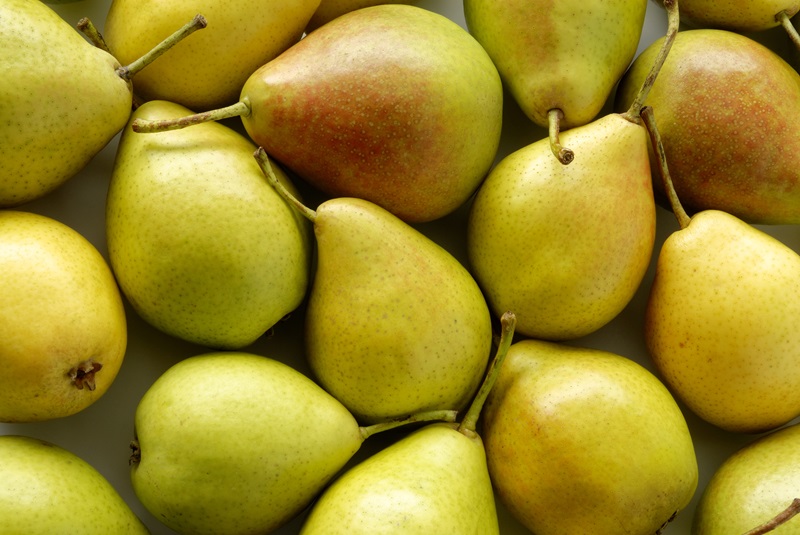
Why Pears Are a Fall Superfood
Pears are more than just the less-popular cousin of apples. A medium-size pear is rich in fiber and immunity-boosting vitamin C.
Pears also are a valuable source of potassium, which plays an important role in managing blood pressure.
Compared to other types of fruit, pears are particularly rich in fructose and sorbitol, two kinds of healthy natural sugars, according to a report in the journal Nutrition Today. Most fruits are high in sucrose and glucose.
“Consumption of pears should improve gut health and prevent constipation,” the researchers note. They also state that “intake of pears/apples…is linked to less type 2 diabetes and stroke.”
Simple Ways to Enjoy Pears
Pears come in several, slightly different varieties. Bartlett turn yellow and grow soft as they ripen, becoming juicy and sweet. Bosc and Seckel are smaller, crisp when ripe, and have a hint of tart flavor to go with the sweetness. All are in season in fall.
Here are some ideas for enjoying all varieties:
Walnuts: Brain-Boosting Nuts for Lasting Energy
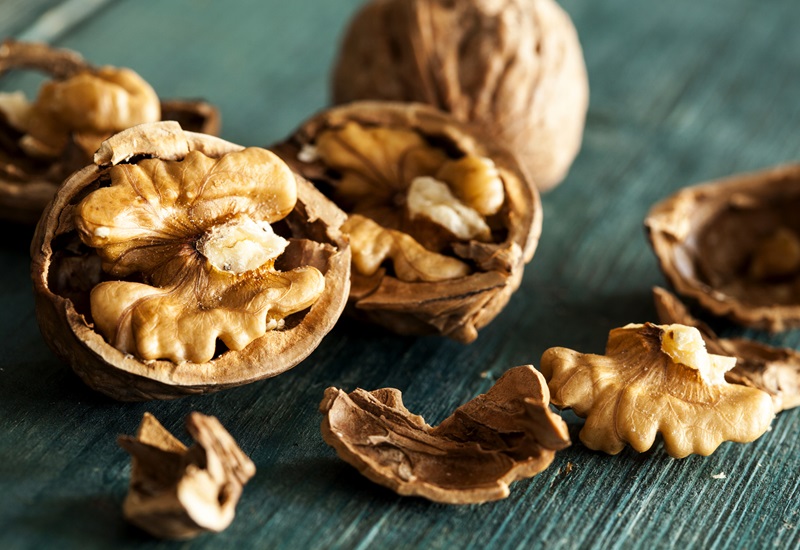
Why Walnuts Are a Brain Food Staple
Like other types of nuts, walnuts are a PowerFuel because they contain healthy fats that keep you feeling full. A half-ounce serving of walnuts has about 100 calories and provides you with substantial amounts of iron and zinc. They are an excellent source of alpha-linolenic acid, the plant-based omega-3 essential fatty acid that helps your heart function properly.
Eating walnuts regularly supports brain performance and memory, and may even protect you from Parkinson’s disease and dementia, says a study in the journal Nutrients. “Substantial evidence from animal and human studies suggests that dietary consumption of walnuts can improve cognitive function and also reduce the risk of other diseases, such as cardiovascular disease, depression, and type 2 diabetes, which are risk factors for the development of dementia,” the researchers wrote.
They add that contrary to popular wisdom, their findings show that “that walnut consumption does not contribute to weight gain or hinder weight loss goals.”
How to Enjoy Walnuts
- Cracking and eating fresh nuts is a fun way to enjoy this nutrient-dense food for fall.
- If you don’t get them in the shells, look for raw, unsalted nuts and toast them briefly in the oven to make them crispy.
- If you want to add flavor, skip the salt and sprinkle the roasted nuts with cayenne pepper or cinnamon.
- Toss a few walnuts into a yogurt parfait or a mixed salad for extra crunchiness.
- Red Walnut Pepper Dip is like a tasty variation on humus.
- Walnuts become a firm and flavorful crust for a healthy Maple Walnut Cheesecake recipe you can make in the instant pot.
Turnips: The Low-Calorie Root Veggie with Cancer-Fighting Benefits

Why Turnips Are Good for You
The lightly spicy roots are members of the cabbage (brassica) family and, like the others, they are fall superfoods. A cup of turnips has about 35 calories and zero fat with 2.3 grams of fiber.
Turnips contain antioxidant compounds called glucosinolates that protect cells from cancer, combat infections and balance blood sugar levels, says a report in Frontiers in Nutrition.
How to Cook with Turnips
White and Purple Top turnips are the common varieties found in grocery stores and farmer’s markets in fall. Their flavor turns a little sweeter after they live through a frost or two. They can be steamed or roasted. Hakurei turnips are smaller, white, mild-tasting, and a little more tender than the standard varieties.
Here are some ideas for preparing the different varieties:
- Change up your everyday mashed potatoes with Mashed Turnips and Apples.
- Check off a Vegetable serving while you’re digging into hot, crispy fries with this recipe for Turnip Fries.
- Cook and mash turnips, then transform them into these delicious Turnip Veggie Patties.
- Roast turnips and use them in this healthy salad recipe.
- Hakurei turnips can be eaten raw, cubed and added to salads, or cut into coins and dunked into your favorite healthy dips.
Cranberries: The Tart Superfood for Heart and Immune Health
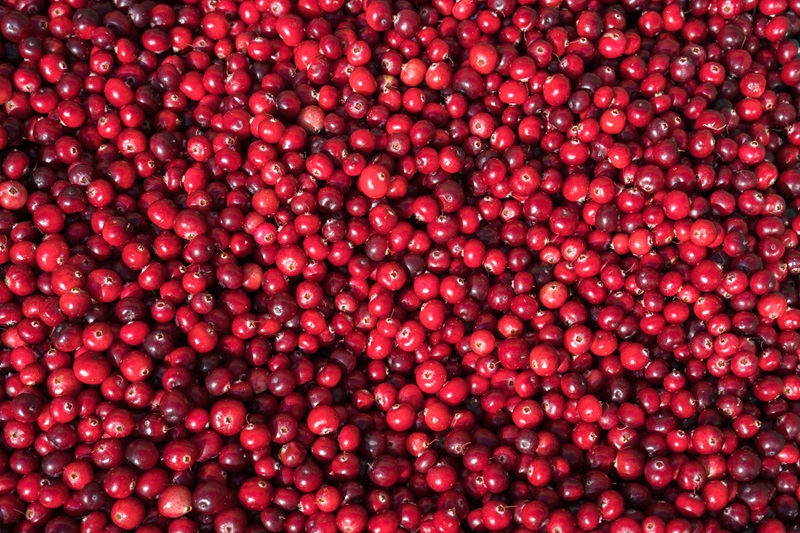
Why Cranberries Should Be on Your Plate
Cranberries are naturally low in calories, with just 50 in a cup of chopped cranberries, according to the USDA. Cranberries are a rich source of vitamins A and C, which support a healthy immune system.
Many people treat urinary tract infections by drinking cranberry juice and the research supports this, says a report in the journal Advances in Nutrition.
The researchers also found “encouraging, but limited, evidence of a cardioprotective effect of cranberries,” which means they may reduce the risk of heart attacks and strokes. Studies with both humans and laboratory animals have indicated that consuming cranberries lowers your levels of LDL (bad) cholesterol and increases HDL (healthy cholesterol).
Cranberries appear to protect against stiffening of the major arteries, a common cause of heart attacks, and are linked to lower blood pressure. The report also highlighted that in animal studies, the flavonoids in cranberries lowered blood glucose and improved insulin sensitivity, valuable benefits for people with Type 2 diabetes.
Best Ways to Eat Cranberries
- Fresh, raw cranberries have a tart flavor that blends well in so many fall favorites. You can add them to salads, oatmeal or smoothies.
- Slow Cooker Cranberry Applesauce is a colorful and nutritious variation on the family favorite side dish.
- Cranberry Brie Baguette Bites can be an elegant starter for a party or a satisfying snack any time.
- Turn holiday meal leftovers or any extra turkey you have into high-protein Turkey Cranberry Salad.
- Whether you’re hosting a party or visiting family and friends, Crustless Cranberry Pie is a rich dessert that’s easy to make and perfect for your weight loss plan.
Cauliflower: The Low-Calorie Veggie for Weight Management and Wellness
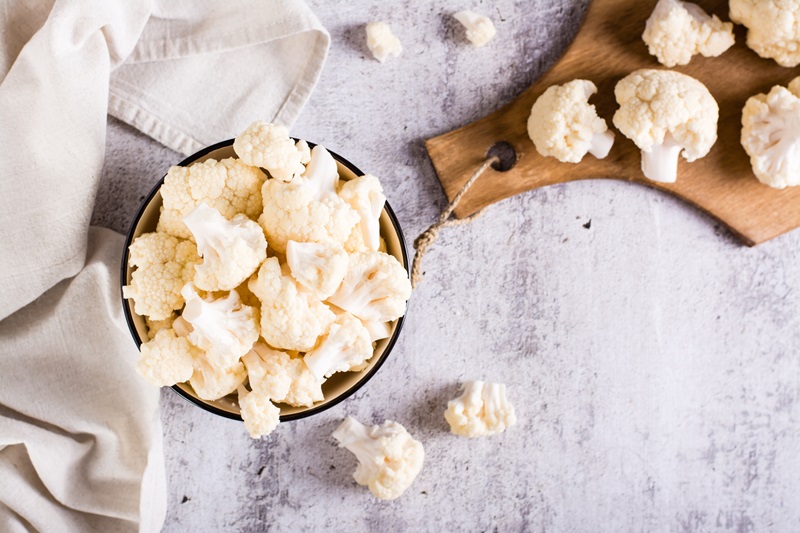
Why Cauliflower Is a Fall Favorite
Another member of the cabbage family, cauliflower has just 27 calories in a one-cup serving. It has no fats or sugars, and is a healthy source of vitamin C (with more than 50 percent of the RDA) and vitamin K.
Cauliflower has glucosinolates, like its cousins broccoli and turnips, which have been shown to suppress cancer cells, according to a report published in Frontiers in Nutrition. The report also noted a lower risk of Type 2 diabetes among people who regularly eat cruciferous vegetables, such as cauliflower.
The researchers conclude, “improvements in glycemic control, blood pressure, and lipid profile have been identified” among people who eat cauliflower regularly.
Delicious Ways to Use Cauliflower

